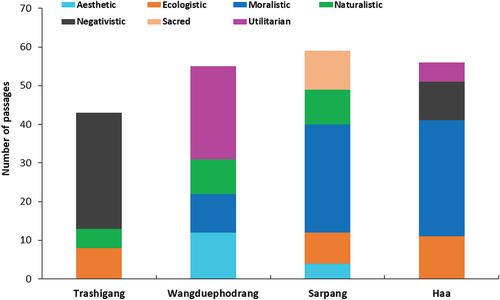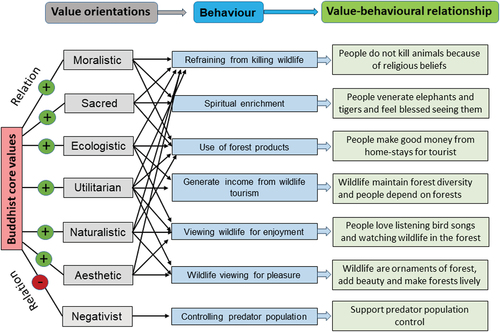Figures & data
Table 1. A typology of Biophilia values, used as a framework of basic wildlife orientations.
Figure 1. Conceptual framework of HWC illustrating how religious beliefs may have shaped people’s WVOS, and WVOs in turn influence attitudes and then attitudes shape human behaviors toward wildlife and the response actions taken. The arrows represent the relationships, how one component is affecting or influencing the other in the framework. These components in turn can be influenced by other factors such as conservation laws and policies, wildlife population and socio-economy.

Figure 2. Map of the Himalayan kingdom of Bhutan showing the four districts and the eight sub-districts selected for this case study.

Table 2. Frequency of coded passages for WVOs by livelihood types in Bhutan (n = 48).
Figure 3. Wvos by districts presented in descending order (Dominant to less dominant and weak to weakest).

Figure 4. Illustration of how multiple values underpin particular human behavior with examples of value-behavioral relationships identified in the study.


